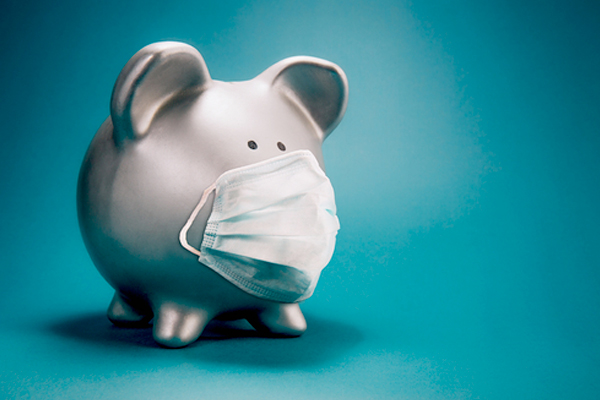The PPP Second Draw Borrower Application was published on January 8, 2021 by the SBA.
You can find it HERE.
As we learned from the initial PPP process, this form and the below information are subject to change.
The SBA issued guidance related to the Second Draw PPP, as well. Second Draw PPP loans are generally subject to the same terms, conditions and requirements as the initial PPP loans with some exceptions. Here is a summary of the SBA’s guidance (the full publication can be found HERE):
Generally, to be eligible for a Second Draw PPP Loan you must have:
- received an initial PPP loan.
- experienced a 25% revenue reduction in 2020 relative to 2019. You calculate this by comparing: (1) gross receipts for the quarters of 2019 to the quarters of 2020 (EXAMPLE: a borrower with gross receipts of $50,000 in the second quarter of 2019 and gross receipts of $30,000 in the second quarter of 2020 has experienced a revenue reduction of 40% between the quarters, and is therefore eligible for a Second Draw PPP loan) – OR- (2) the entire year of 2020 to 2019 (if you were operational for all four quarters).
Gross receipts are: All revenue in whatever form received or accrued (in accordance with your accounting method) from whatever source. Generally, it is “total income” plus “cost of goods sold” and excludes net capital gains or losses.
- used or will use the full amount of your initial PPP loan for authorized purposes on or before the expected date of disbursement of the Second Draw PPP loan.
- spent the initial PPP loan on eligible expenses.
- 300 or fewer employees.
You cannot be permanently shutdown.
The maximum loan amount for a Second Draw PPP Loan is equal to 2.5 times your average monthly payroll cost (using either the 12 months preceding when the loan is made (sole proprietors/independent contractors cannot use this method), 2020 or 2019). The loan amount cannot exceed $2M.
At the time of application, you will need to submit documentation to establish the required revenue reduction if your requested loan amount is greater than $150,000. If your loan is less than $150,000 you do not need to submit the revenue reduction documentation at the time of application, but you will have to submit that documentation at the time you apply for forgiveness. In addition, lenders can rely on the documents you submitted for your initial PPP loan if you are relying on the year 2019 for your calculations. In some instances, you may not need to submit documentation with your application.
The Loan Forgiveness rules remain the same under both Second Draw and initial PPP programs. The expanded categories of eligible expenses are a recent noteworthy change. Please be aware that you still must use at least 60% of the loan proceeds on payroll costs and no more than 40% on other eligible expenses:
Eligible expenses are:
- payroll: salary, wage, vacation, parental, family, medical, or sick leave, health benefits
- mortgage interest: as long as the mortgage was signed before February 15, 2020
- rent: as long as the lease agreement was in effect before February 15, 2020
- utilities: as long as service began before February 15, 2020
- covered operations expenditures: payment for any business software or cloud computing service that facilitates busines operations, product, or service delivery, the processing, payment or tracking of payroll expenses, human resources, sales and billing functions, or accounting or tracking of supplies, inventory, records and expenses.
- covered property damage costs: cost related to property damage and vandalism or looting due to public disturbances that occurred during 2020 that was not covered by insurance or other compensation.
- covered supplier costs: expenditure made by an entity to a supplier of goods for the supply of goods that are essential to the operations of the entity at the time at which the expenditure is made and is made pursuant to a contract, order or purchase order in effect at any time before the covered period or with respect to perishable goods in effect before or at any time during the covered period.
- covered worker protection expenditures: an operating or a capital expenditure to facilitate the adaption of business activities to comply with requirements established or guidance issued by the DHHS, the CDC, or the OSHA, or any equivalent requirements established or guidance by a State or local government, during the period beginning on March 1, 2020 and ending the date on which the national emergency related to asCOVID-19 expires related to the maintenance of standards for sanitation, social distancing or any other worker or customer safety requirement related to COVID-19. Expenditures may include: the purchase, maintenance or renovation of assets that create or expand: a drive-thru window facility; an indoor, outdoor or combined air or air pressure ventilation or filtration system; a physical barrier such as a sneeze guard, an expansion of additional indoor, outdoor, or combined business space; an onsite or offsite health screening capability (do not apply to residential or intangible property). PPE is also included in this additional category.
We suggest you review the eligibility requirements of the program to determine if you can apply. Also, begin to complete the application and gather the necessary documentation so you are ready for when your lender begins to accept applications.
The last day to apply for and receive a PPP Loan is March 31, 2021.
If you have any questions or need assistance, please do not hesitate to contact Adam M. Stumpf at as@chehardy.com or 504-833-5600.

